Plumeria rubra
Plumeria rubra is the hardiest species of frangipani and is the most commonly found frangipani (at least outside of the tropics and definitely in Australian cities such as Perth and Sydney).
Rubra Means Red in Latin
If you haven’t red about frangipani names or frangipani species ever before, you would probably guess a frangipani rubra had a red flower. In fact, about 99% of the unique frangipani flower colours in our world belong to the rubra species.
The below image shows all the main frangipani flower colours that I’ve seen and where they are positioned on the colour wheel.
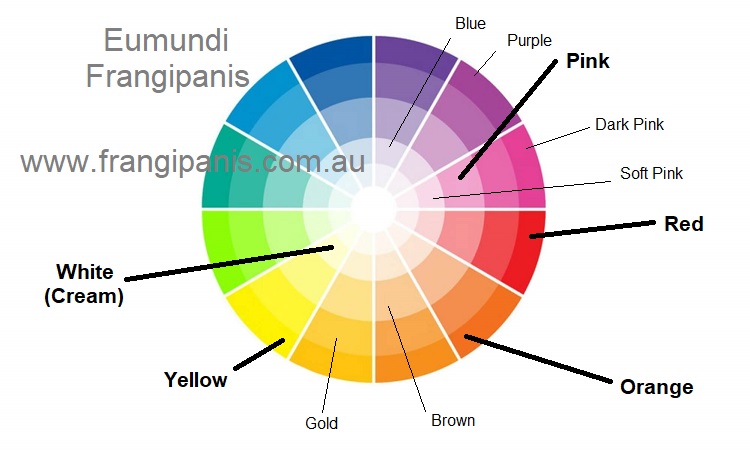
Plumeria Rubra Identification
The easiest way to identify a Plumeria rubra is to confirm that it looks like a frangipani and confirm that it’s NOT and an obtusa. Obtusa varieties have glossy leaves.
Other frangipani species don’t really look like a (common) frangipani so they aren’t easily confused with P. rubra.. The sericifolia has upright leaves and the stenophylla and caracasana have narrow leaves. Pudicas are bushy and have thinner branches.
Obsolete Plumeria Rubra Sub Species
There have been a variety of methods for grouping varieties within the P. rubra species but the latest news on Wikipedia, as updated by the experts, is that variations such as acutifolia (P. rubra f. acutifolia) and lutea (P. rubra f. lutea) are no longer the correct terminology.
Grouping Frangipani Flower Colour Groups
Most frangipanis are multicoloured and do not easily fit into a colour group however when flowers are viewed from a distant, the colours blend together and appear as a single colour. (See the colour circle above.)
The most logical way to group frangipani flowers seems to be into five colours, cream, yellow, pink, orange and red.
Yellow, White and Cream
Many frangipani flowers are white with a yellow throat. From a distance, the yellow and white colours merge and the flowers appear cream. This is why some plant labels will say “cream” instead of “white”.
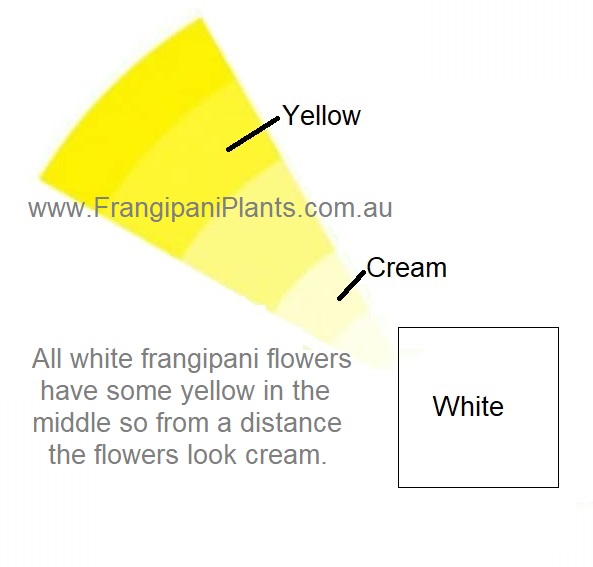
Yellow Frangipani Flowers
Some frangipani flowers start as all yellow flowers. Even though the sun washes out the colour and they fade to cream and white, these flowers fall into the yellow category.
Pink Frangipani Flowers
When red and white is mixed or merged, we see pink.
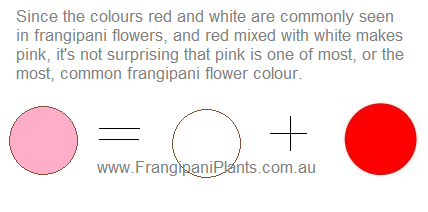
Orange Frangipani Flowers
Why is it that frangipani trees with orange flowers can often be seen while driving around the city, yet pure orange frangipani flowers are very rare?
There are many multicoloured frangipani flowers containing a combination of pink, red, orange and yellow. When viewed from a distance, we usually see a shade of orange. Sometimes light orange, sometimes dark orange but usually a shade of orange.
These multicoloured frangipanis often have three dominant colours, pink, yellow and orange which is why they often get called Tricolour frangipanis. Sometimes when a these so called multicoloured frangipanis produce flowers with not so much yellow, they still get called Tricolours because three dominant colours can still be seen. Usually, it’s the white in between the pink and the orange.
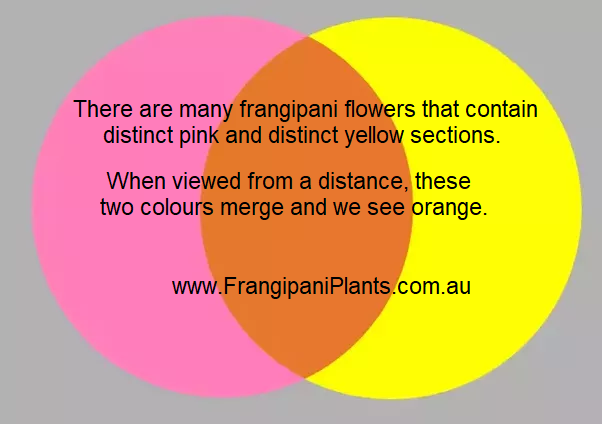
Red Frangipani Flowers
In my opinion, the colour “red” represents the purest frangipani flower colour of them all. Of the three primary colours, there is no such thing as a pure blue or pure green frangipani flower.
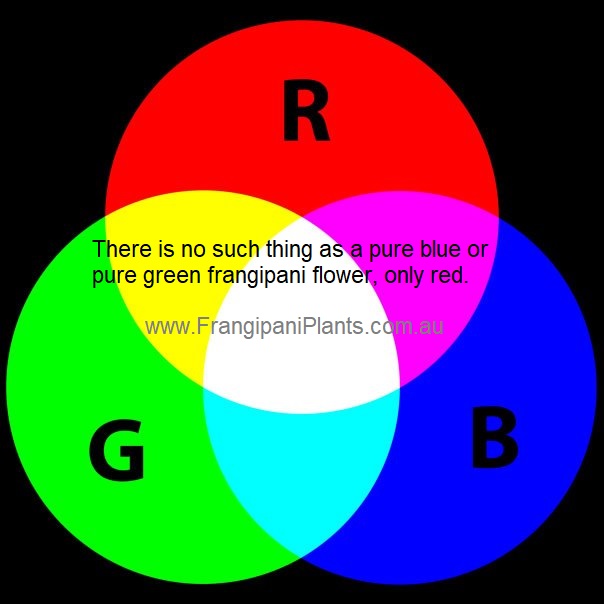
If a touch of white is mixed into a red flower, the flower will appear dark pink and more white will make the pink lighter and lighter. While pink flowers have their own form of beauty, it could be said that pink frangipani flowers are just diluted or impure red. That is why, in my opinion, dark red or black red frangipani flowers are the most undiluted colours of all frangipani flowers and it’s no surprise that dark red flowers are one of the most sought after frangipanis of them all.
Secondary Colours
Besides the dark red frangipani flower, there is also something very special about the yellow and hot pink frangipani flowers. They are quite uniform in colour (on close inspection, the Hot Pink can be seen to have an orange centre) and both appear to be a blend of RED and another primary colour.
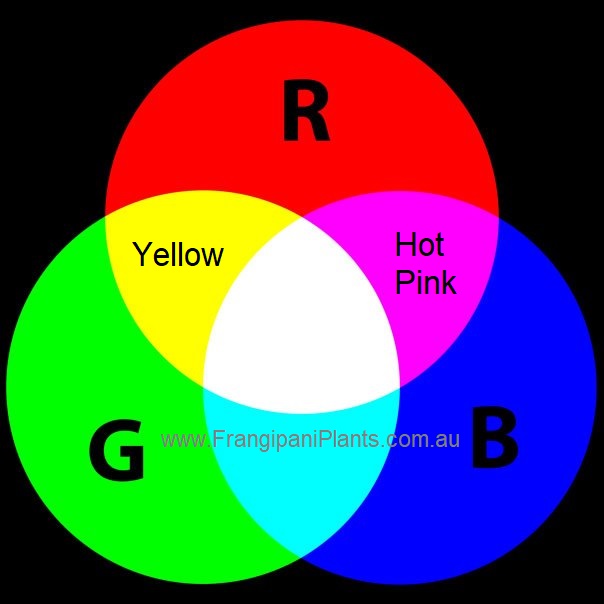
What’s the connection between RUBRA frangipanis and “rubra” the Latin word meaning “red”.
Is it because all rubra flowers have a red influence?
Is it because the original frangipani flower was red and mutated genes have resulted in a range of colours?